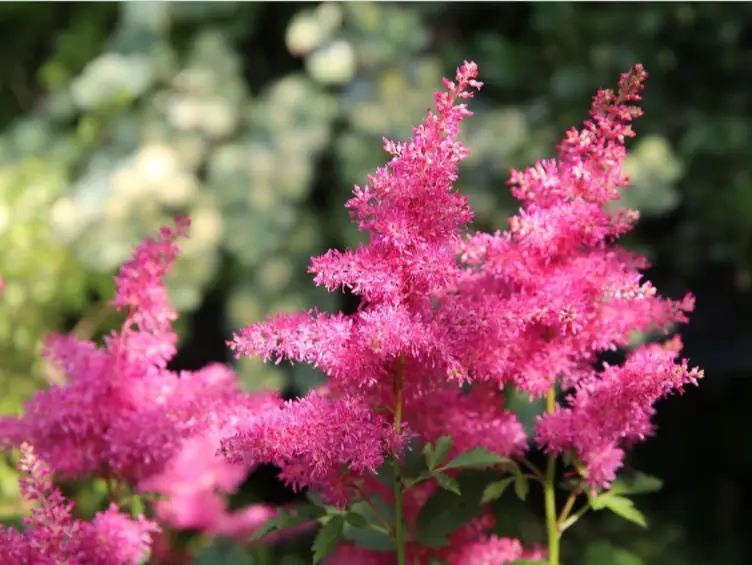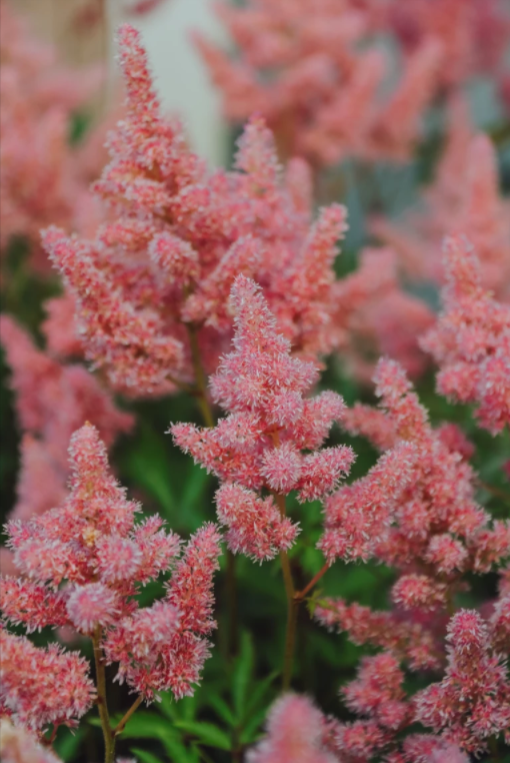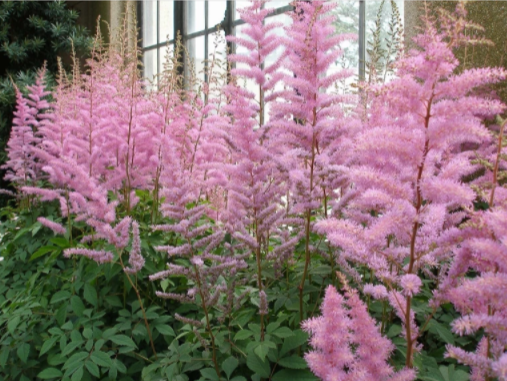Astilbe
| Name: Astilbe | Family: Saxifragaceae | Type Plant: Perennial herbaceous flowering plant |
| Flowering time: Blooms from late spring to late summer, with peak blooming typically occurring in June to July. | Best time to buy: pring and early summer are the best times to purchase Astilbe, as this is when they are usually available in garden centers. They can also be planted in fall. | Max Height: Depending on the species and variety, Astilbe can reach heights ranging from 1 to 4 feet (30 to 120 cm). |
| Sun/Shadow: Prefers partial to full shade, particularly in hotter climates. Astilbe can tolerate some sun but may require more water in full sun conditions. |
Origin
Astilbe has its roots in East Asia, particularly in countries like China, Japan, and Korea. The name “Astilbe” is derived from the Greek words “a” (meaning without) and “stilbe” (meaning brightness), referring to its appearance. Originally, astilbe was primarily grown for its value in gardens due to its beauty. However, as the appreciation for cut flowers grew, astilbe found its way into the world of floral arrangements and bouquets.
Characteristics
Astilbe is known for its special properties, making it a sought-after choice in the cut flower world. The panicle-like inflorescences come in a variety of fascinating colours, including white, pink, red and lavender. Astilbe’s foliage adds not only depth but also texture to floral arrangements.
What makes astilbe truly special is its longevity. With proper care, astilbe can adorn your floral creations for up to two weeks. This extended vase life makes it an excellent choice for seasoned professional florists and enthusiastic DIYers alike. Its versatility is limitless and fits seamlessly into a variety of roles, whether in bridal bouquets, centrepieces or mixed arrangements.
Care
To ensure that your astilbe blooms remain fresh and vibrant, follow these care and handling guidelines:
- Trim Stems: Upon receiving your astilbe, trim the stems at a 45-degree angle and remove any leaves that may be submerged in water.
- Clean Vase: Use a clean vase and fill it with lukewarm water. Add floral preservative to extend the vase life of your astilbe.
- Regular Water Changes: Change the water in the vase every two to three days and recut the stems. Fresh water helps prolong its freshness.
- Avoid Direct Sunlight: Place your astilbe arrangement in a cool, shaded spot away from direct sunlight and drafts.
- Hydration: Astilbe has a high water uptake rate, so ensure the vase is consistently filled with water to keep the blooms hydrated.
Inspiration for Astilbe Arrangements
Astilbe’s versatility makes it a fantastic choice for various floral arrangements:
- Romantic bouquets: Create beautiful bridal bouquets by combining astilbe with roses, peonies and gypsophila.
- Centrepieces: For enchanting centrepieces, combine astilbe with hydrangeas, ranunculus and eucalyptus leaves.
Best Time to Buy Astilbe
Astilbe is generally available during the summer months, from late spring to early autumn. To buy the freshest astilbe, visit our webshop.




